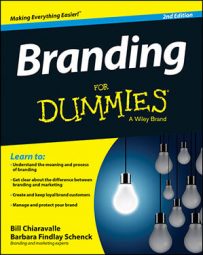Your brand statement, also called your brand definition, shrinks all your thoughts about your business mission, values, promise, and character into a concise statement that defines what you do, how you differ from all other similar solutions, and what you pledge to consistently deliver.
The brand statement you develop serves as the steering wheel for your branding strategy. It influences every turn you make in presenting your brand — from giving it a name and logo to producing ads and marketing materials to creating the experience that customers will encounter when they come into contact with your brand from any direction.
What to incorporate
As you write your brand statement, be sure that it reflects the following information:
The three things you want people to know about your business: What you offer, the audience you serve, and how you’re best at what you do.
Your point of difference (how you serve your target market differently and better than all other options).
Your business promise that will be upheld through all brand experiences.
Your brand character or personality that will be communicated through the mood and voice projected in all brand expressions.
The anatomy of a brand statement
Your brand identity is the face of your brand. It includes your name, logo, tagline or motto, advertising, marketing materials, signage, and every other way that you express your brand in your business and in your marketplace.
Your brand statement guides your brand identity. It describes the people your brand must relate to, the attributes it must highlight, and the promise and character it must convey. To write a brand statement that guides your branding strategy, use this format:
[Your name] promises [your target market] that they can count on us for [your unique attribute or benefit] delivered with [information about the character, voice, and mood you convey].
Grade your statement
Before accepting your brand statement as the one that will guide your branding strategy, see if you can answer “yes” to these three questions:
Does the statement illuminate your difference? Does it make it clear how you differ from other solutions in your business arena?
Is the statement customer-centric? Does it clarify what valuable benefit or value you provide and promise to others rather than what you aspire for yourself?
Can you project the statement with a unified voice across all markets and media? And can you fulfill its promise through every contact with your business and as part of the overall customer experience with your brand?
Put your brand statement to the test
After you commit to your brand statement, test it internally within your business and with key customer or prospective customer groups.
In personal meetings and focus-group sessions, confirm that the brand statement you’ve crafted resonates with your target market audience by learning the answers to these questions:
Is the promise you make consistent with the beliefs people currently hold about you? Or if you’re branding a new business or product, is the promise one in which you realistically believe you can develop trust?
Is the promise one you can live up to through every form of marketplace encounter?
Is the promise easy to understand? If one customer were to explain it to another, do you believe they would be able to express it clearly?
Are the unique attributes or benefits highlighted in your brand statement truly meaningful to customers?
Is the character that you’ve summarized in your brand statement consistent with the character that others believe you exude?
If you uncover slight differences between the promise, benefits, and character defined in your brand identity statement and the attributes others believe to be true about your business, are you clear about what adjustments would align the two mind-sets?
If your brand will serve a concise, easy-to-reach, and relatively small market, you can test your brand statement on your own. For brands that serve larger markets or face major competition from established and recognized brands, invest in professional assistance to test your statement before putting it to work as you name your brand, design its logo and tagline, and create marketing materials.

